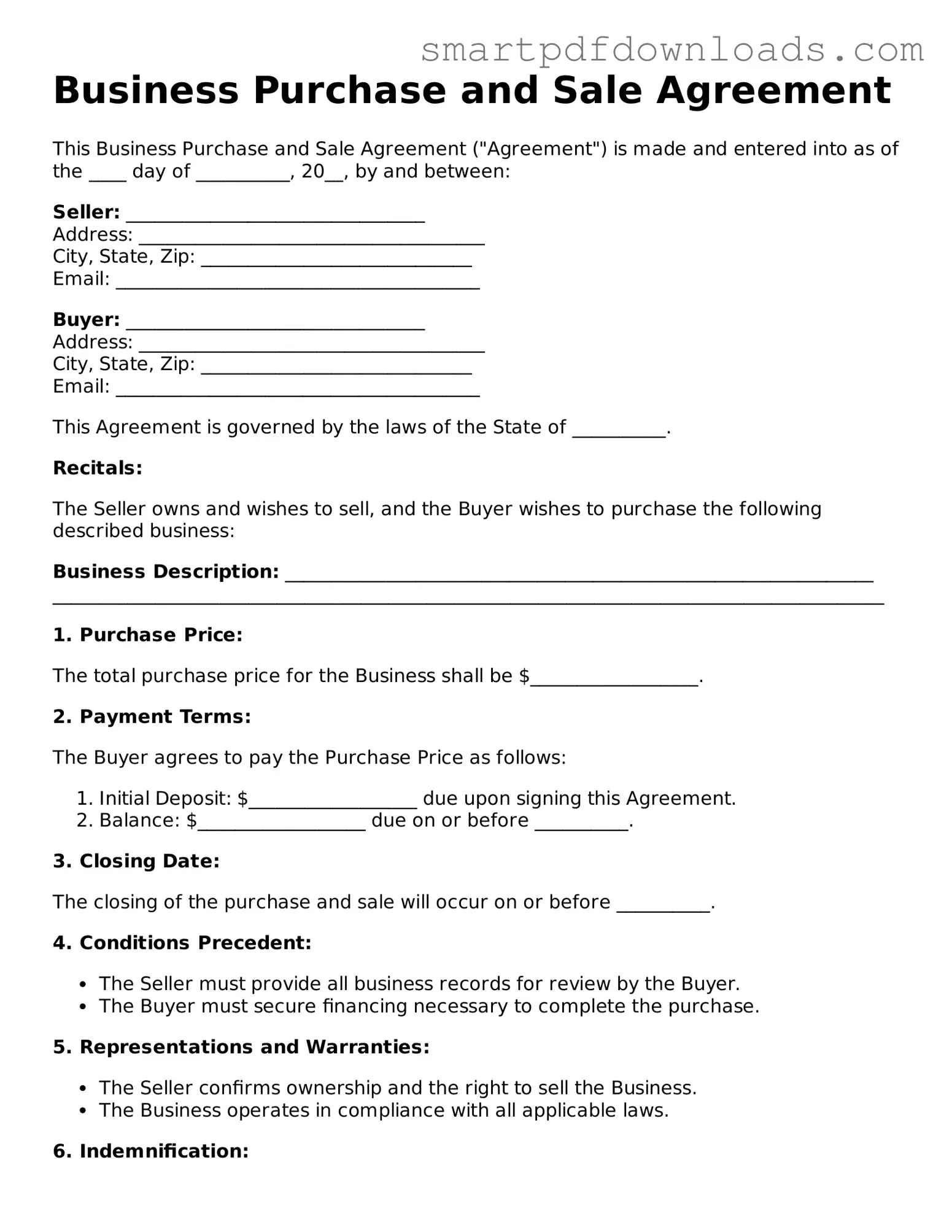Business Purchase and Sale Agreement
This Business Purchase and Sale Agreement ("Agreement") is made and entered into as of the ____ day of __________, 20__, by and between:
Seller: ________________________________
Address: _____________________________________
City, State, Zip: _____________________________
Email: _______________________________________
Buyer: ________________________________
Address: _____________________________________
City, State, Zip: _____________________________
Email: _______________________________________
This Agreement is governed by the laws of the State of __________.
Recitals:
The Seller owns and wishes to sell, and the Buyer wishes to purchase the following described business:
Business Description: _______________________________________________________________
_________________________________________________________________________________________
1. Purchase Price:
The total purchase price for the Business shall be $__________________.
2. Payment Terms:
The Buyer agrees to pay the Purchase Price as follows:
- Initial Deposit: $__________________ due upon signing this Agreement.
- Balance: $__________________ due on or before __________.
3. Closing Date:
The closing of the purchase and sale will occur on or before __________.
4. Conditions Precedent:
- The Seller must provide all business records for review by the Buyer.
- The Buyer must secure financing necessary to complete the purchase.
5. Representations and Warranties:
- The Seller confirms ownership and the right to sell the Business.
- The Business operates in compliance with all applicable laws.
6. Indemnification:
The Seller agrees to indemnify and hold harmless the Buyer from any claims arising before the date of sale.
7. Governing Law:
This Agreement shall be governed by and construed in accordance with the laws of the State of __________.
8. Signatures:
IN WITNESS WHEREOF, the parties have executed this Agreement as of the date first above written.
_______________________________
Signature of Seller
Date: _________________________
_______________________________
Signature of Buyer
Date: _________________________
